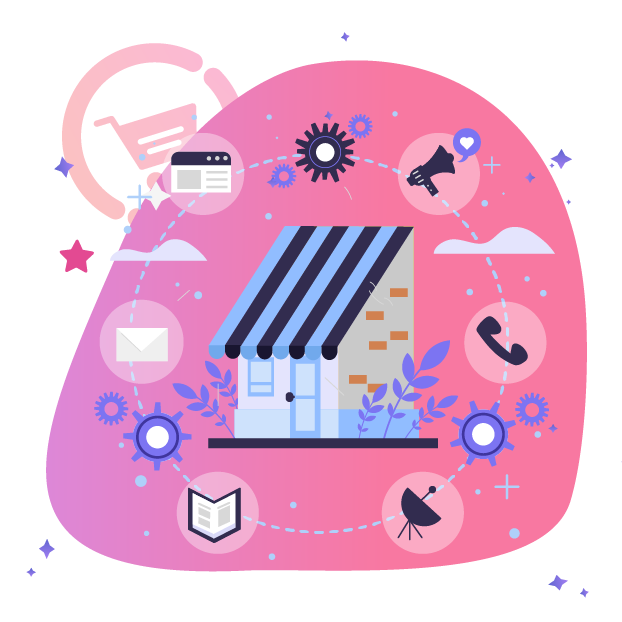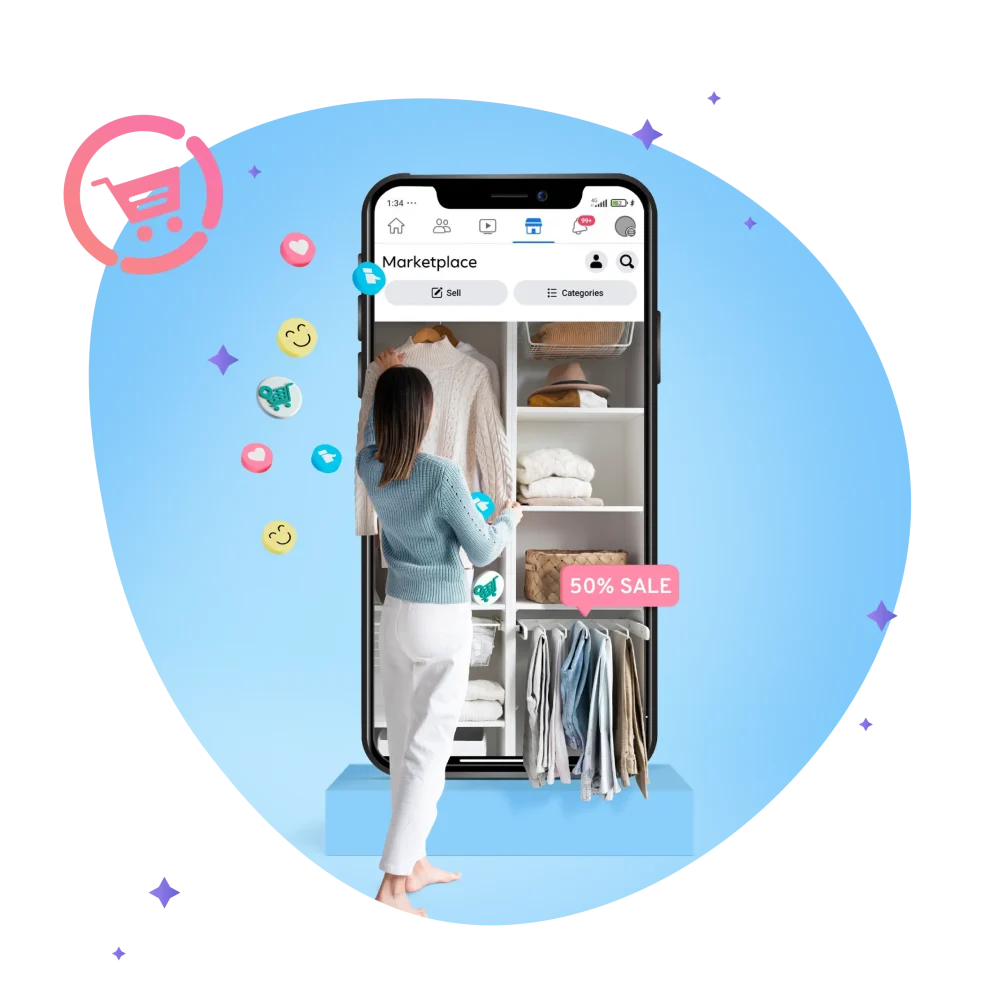
Packaging for eCommerce | Unboxing what you need to know
May 22, 2023
How to make money on social media in South Africa: Small Business Selling (2023)
May 24, 2023While there are multiple recipes for success when running your eCommerce business, a few make-or-break essentials can’t be skipped. eCommerce and logistics — as well as how they work together — go hand in hand and create one of the biggest elements of your business.
It’s no secret that to run an efficient and profitable eCommerce business; you must have a firm grasp of every component surrounding your company. When sitting down to pinpoint the costs of your eCommerce business, there’s a lot to consider.
In fact, with the industry’s growth in recent years, the list of things to keep in mind can seem to be never-ending. But, before hunkering down and starting with non-essentials, one of the first things you need is a holistic understanding of eCommerce logistics.
So, let’s break down every bit of info you need in your arsenal for the effective logistics of eCommerce.
Index:
- What is eCommerce logistics
- Main eCommerce logistics components
- eCommerce logistics types
– In-house logistics
– Dropshipping
– 3PLs - Inventory management and its importance
- Product packaging
- Product collection for eCommerce logistics
– Collection and order fulfillment
– Customer collection - Parcel tracking and insurance
- Understanding eCommerce logistics
- The finer details of the eCommerce logistics chain from a cart to customers
– Supplies
– Fulfillment Centres
– Distribution Centres
– Sorting Centres
– Delivery Options - Critical consideration of eCommerce logistics Solutions
- The costs associated with eCommerce logistics
- User Intergrated eCommerce apps
- Managing returns/exchanges
- Common eCommerce logistics best practices
- Final thoughts | Logistics eCommerce
What is eCommerce logistics?
Simply put, eCommerce logistics, often labelled “eLogistics”, describes the process your eCommerce brand uses to ensure an order is out of the door and into the hands of your customers quickly and efficiently.
This process does, however, involve quite a few in-between steps, such as packing, shipping, and, ultimately, delivery.
Main eCommerce logistics components
One thing to remember is that when you’re dealing with eCommerce logistics, you need to keep things as simple as possible. This makes a complicated process easier to manage and avoids costly logistics nightmares later on.
eCommerce logistics types
Generally, there are three ways in which you can manage your eCommerce logistics system, each with its advantages and disadvantages.
In-house logistics
Managing your eCommerce logistics in-house translates to you operating every aspect of your supply chain, product procurement, and delivery yourself. While this has the potential to be a money-saver in some ways, there’s quite a bit to unpack here.
You’ll be responsible for tracking shipments from your suppliers to a warehouse or distribution centre. Beyond that, you’ll need to understand and master every aspect of your eCommerce platform analytics, paired with the maths of calculating shipping costs, among other elements of number juggling.
This also means you’ll take control of shipping each order manually, which is time-consuming, to say the least. Just imagine spending nights delving into the inner workings of Microsoft Excel or Google Sheets simply to streamline an otherwise straightforward process you could outsource.
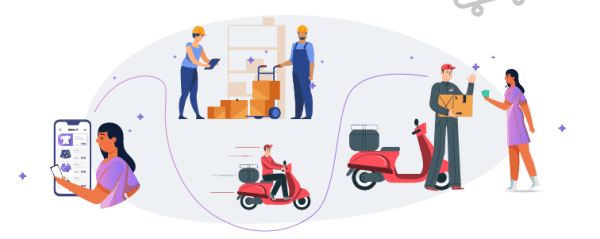
Dropshipping
A growing trend in eCommerce, especially post-covid 19, dropshipping is a much more simplified method of getting your product to your customer. Using dropshipping, your supplier or manufacturer delivers your product directly to its end destination, and you simply facilitate the sale.
When it comes to minimising costs, this is one of the cheapest options as it eliminates any warehousing or storage costs. On the other hand, if you choose to use dropshipping, you have to deal with an increase in delivery times potentially. Should you be shipping internationally, you could face drastic delivery time constraints.

3PLs
Sitting on the other end of the logistics spectrum, you have third-party logistics (3PL) providers. As the most convenient and often hassle-free option, these service providers take care of every logistics process, so you don’t have to offer much input.
So when you consider the ideal shipping strategy for your business, this removes the stress of inventory tracking, supplier management, warehousing, and packaging. Another benefit of using 3PLs is the possibility of providing your customers with same-day, next-day, or two-day delivery options.
Some other advantages of using a 3PL include:
- You can store your inventory in their dedicated fulfilment centres or warehouses, eliminating the need to lease or own your own.
- 3PLs offer robust technology that helps keep track of your inventory and orders. Some also provide detailed analytics to help you identify product and buying trends.
- Considering their specialised industry knowledge 3PLs can offer helpful suggestions on improving your supply chain and logistics approach.
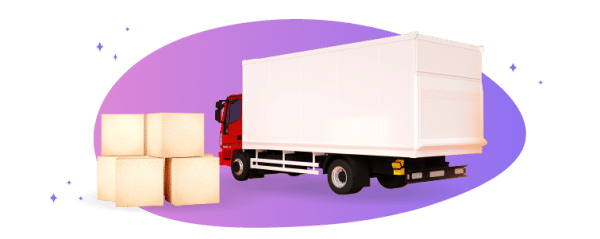
Inventory management and its importance
Once you understand that the success of your logistics plan of action rests on how well you handle the aspects of inventory management, things get a lot easier.
Here are a few key takeaways to have in the back of your mind when approaching your inventory and logistics solutions for eCommerce:
- Unlike the logistics of offline businesses, your eCommerce company is far more complex and nuanced. You have to keep in mind that commonly-accepted things like inventory management is equally as essential as, for example, efficient delivery and reverse logistics.
- Brick-and-mortar businesses have some luxury with regards to the two latter elements, thanks to a vast system of outsourcing. But your business depends on the highest attention to detail in every component. The flow of products when it comes to eCommerce is significantly different from that of offline businesses. Closely related to storage and warehousing, having a system of inventory management where you can track what comes in, when it does, and when it goes out is crucial.
- A blunt fact is that most small-scale eCommerce businesses do not have the capital to fund the ownership of large warehouses. That’s where leasing of such facilities comes into play. The upside is this helps track your product influx and its proper handling until it is shipped.

Your inventory management system will also need to focus on three logistics subsections:
- Inbound Logistics: Basically, this involves the process of managing the inbound flow of raw materials from suppliers to manufacturers. The manufacturers receive these materials and process them, producing the goods you’re offering to customers.
- Outbound Logistics: After your finished product has been completed, it involves transportation from the production facility to the next part of your supply chain. This could be a warehouse, fulfilment centre, or distribution centre. From there, it gets distributed to the customer. The most important aspect of the logistics cycle is the outbound process, as it contains the picking, packaging, and shipment of your product. Another essential element of this step is that your consumer has a direct link to your business here.
- Reverse Logistics: After your customer receives their order, the final process in the logistics chain – reverse logistics – comes into play. Think of it as the backwards movement of products from your customer to you. Usually, this happens when a product is either damaged or unnecessary. If you’re focusing on in-house logistics or dropshipping, this could be a detrimental cost. But if you’re working with a 3PL, there are policies to ensure this process is smooth and as effortless as possible.
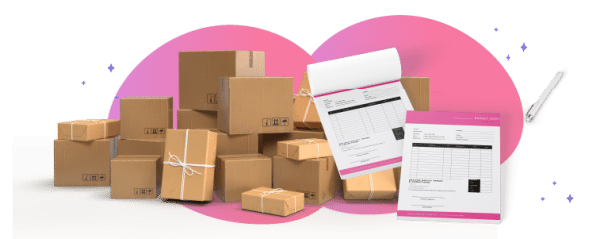
Product packaging
Now, you might be wondering how exactly product packaging and eCommerce logistics connect to one another. Similar to how every facet of your logistics chain and system has a role to play, so, too, does your packaging.
While having your products presented in an eye-catching design or striking package is great, the most important thing is that it arrives at their end destination in one piece. This doesn’t always translate into artistic works of wonder, but making sure your packaging guarantees safe delivery, beats beauty any day.
On the logistics side of things, size constraints and proportions are key to maximising the outbound part of the process. Considering factors like road conditions and cross-border shipping, your product packaging is the biggest surety you have that your customer gets their product in mint condition.
The more care, caution, and consideration you put into packaging your products, the better.

Collection and order fulfilment
The first involves collecting products from suppliers or manufacturers and transporting them to warehouses, fulfilment centres, or distribution centres. When you look at the concept of outbound logistics, this will fall into the first few steps of that procedure.
If you’re managing all your logistics in-house, you must put in place a tracking system to ensure products flow between locations as seamlessly as possible. From the moment your order is collected until it reaches the distribution sector, it’s your responsibility to guarantee timeliness and efficiency.
Customer collection
Secondly, you have the option to allow your customers to pick up instead of ship goods after making payment. After going through your payment gateway, this offers customers some input into how they receive their goods.
If you opt for this option, remember that you’ll need to ensure that products are readily available at strategic locations. Usually, this means major metropolitan areas that make it easy for consumers to head out and collect their orders without any hassles.
For customer collections, other countries such as the US pioneered collect-at-business options, and this is now a possible avenue for your company in South Africa as well. Takealot and Pargo, for example, offer a variety of well-located options locally, and from an SME perspective make ideal solutions for customer collections.

Parcel tracking and insurance
Okay, let’s fast forward through the entire inbound and outbound logistics chain to just before your customer gets their product. Your entire system has flowed well, and now your product is on its way to the happy hands of your buyer.
This can be an area where many pitfalls arise that some eCommerce businesses just don’t pay enough attention to. Commonly called “last-mile delivery”, a courier or distribution carrier takes possession of your goods and transports them, and now your direct link to your customer is created.
It is standard procedure that once your product is picked up from a fulfilment centre or warehouse, a tracking number is created. This is an identification code designated explicitly for one specific parcel. This allows you and your customer to track the delivery process precisely.

As a business owner, it’s your responsibility to ensure that this step is followed and customers can always track their items from dispatch to delivery. But, beyond tracking, there’s one other element at play here.
You need to provide assurance to your customer that their parcel will reach them intact and on time. And at the same time, you need to have the same security from your courier service. If you’re using a 3PL, you pay an additional fee to insure every parcel in case of damage or negligence.
As for your consumer, you’ll need to provide them with the option to pay an additional fee to ensure their package during delivery. If something goes wrong while items are in transit to their end destination, you need a contingency plan to minimise costs. This also comes down to offering a refund or exchange option should an item reach your customer damaged.

Understanding eCommerce logistics
You’ll find the basic principles of any product-providing business at the core of eCommerce logistics. Your customer makes a purchase, then the order is packed, shipped, and delivered to the buyer.
However, is it really that simple? Let’s sketch a little scenario. As your startup (or established business) begins to defy the odds and you see actual revenue start to flow in, success is within reach. Before you start counting your chickens, your achievements could hang in the balance.
How? Well, the potential for financial loss lies heavily on whether you’re spending too much on logistics. Or if you’re shipping products in a way that consumers aren’t used to. And no matter your expertise in selling a product, logistics, especially in eCommerce, is a science all its own.
Don’t let that scare you, though. eCommerce logistics is easy enough to get a grip on and make your best friend as you reach new customers and heights. This means you’ll need a solid system to track inventory, order fulfilment, and tracking.

The finer details of the eCommerce logistics chain from cart to customer
Even though the playing field for eCommerce logistics isn’t that broad, there are a few finer details within the logistics chain you’ll need to keep in mind.
1. Suppliers
The logistics chain’s first and most important aspect revolves around your supplier. These companies or manufacturers create your product, and from them, they are shipped to what are commonly called fulfilment centres.
Finer detail: Should your supplier work off of dropshipping, they will deliver directly to your customers. If not, you place a bulk order, and products are shipped to warehouses; this then involves a third-party delivery service from the warehouse to your customer.
2. Fulfilment Centres
Traditional warehouses differ from fulfilment centres in a few key ways. But most important for your eCommerce logistics services is this – inventory is held at strategic locations. These are usually closely located to your end consumer, and once an order is received, it is packed and shipped as soon as possible.
Finer detail: As an eCommerce business, you can independently own and operate a fulfilment centre or employ a third-party service to do so.
3. Distribution Centres
In contrast to fulfilment centres, a distribution centre is more focused on offering similar services to large-scale companies with more extensive inventories. Usually, a facility like this is split between warehouses and transport hubs.
Finer detail: If you choose to use a distribution centre model, you can use separate warehouses. This enables you to offer direct-to-customer logistics and business-to-business logistics independently.
4. Sorting Centres
A relatively obvious link in any logistics chain is sorting centres. These operate by receiving large amounts of inventory for orders. Products are then sorted into smaller shipments specifically based on individual customer orders.
Finer detail: A sorting centre solution is unnecessary if you’re not yet running an eCommerce business that requires large quantities of inventory.
5. Delivery Options
Finally, you have your delivery or shipping options. These are third-party service providers that transport your product to its final destination. They receive the order from a distribution or sorting centre, or they collect it from fulfilment centres. Internationally you have a few options, such as FedEx or DHL.
Locally there is a range of domestic courier companies for you to choose from, but ideally, you want to link your eCommerce platform and delivery service as closely as possible. Netcash Shop and Fastway are an excellent example of this.
Finer detail: A joint partnership means your logistics system runs more efficiently because you don’t have to stress over delivery details.
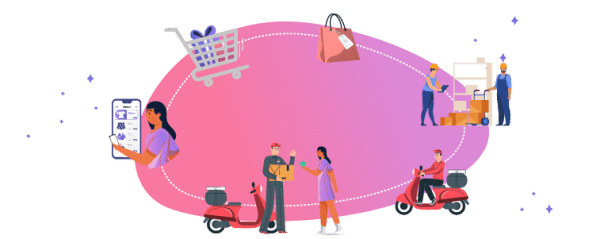
Critical considerations of eCommerce logistics Solutions
There are still several important factors for you as the manager and owner of an eCommerce business to consider. Here’s a breakdown of logistics costs and how to improve the efficiency of your logistics chain.
The costs associated with eCommerce logistics
At the end of the day, your budget for logistics will hinge on a few things. The most basic is production costs, how much collateral you have to invest into manufacture and supply. This is where diversifying your supply chain can help, especially if you source locally.
Next up, you must consider which logistics system you’ll be using. If you’re operating in-house logistics, you’ll need to prepare for a wide range of costs that don’t just deal with cart-to-customer. Expenditures for supply management, running costs between inbound and outbound logistics, and reverse logistics could all amount to quite a large sum of money.
Dropshipping does offer a cheaper alternative, as mentioned above. Still, you’ll have other concerns to deal with. Ultimately, using 3PLs does lower unexpected costs for you, and you could see cost reduction in various areas.
If you’re looking at driving revenue for your business, a 3PL partnership is the most cost-effective solution.

Using integrated eCommerce apps
Thankfully, the modern world has many advantages to offer the world of eCommerce logistics. It’s never been easier to automate as much of any process as it is today. That means you can use integrated software and apps to help align your logistics chain with your estimated costs and profit.

Managing returns/exchanges
As the world moves to more online retail options that shift the dated landscape to a more virtual landscape, customers are starting to pay a lot of attention to return policies. This is a crucial thing to take into account when figuring out how you’re going to approach your logistics.
If you have your well-thought-out reverse logistics system or solution in place, if you do not manage your returns or exchanges properly, it can come crumbling down. That makes having a firm handle on and excellent presentation of your returns policy a massive advantage over your competitors.
A clear, concise, and direct returns policy reduces potential so-called “hidden” logistics costs from plaguing a return or exchange. If everything is in black and white, in as easy-to-understand language as possible, you can ease any stress off your and your customers’ shoulders.
However, to achieve this cost reduction consider the following:
- Does your business have a dedicated space (either in-house or off-site) for return management?
- Is your returns process displayed to your customer while shopping directly and easily understood?
- Have you done everything you can to ensure packaging minimises possible damage?
- Does your website offer a returns portal that enables quick and effortless returns?

Common eCommerce logistics best practices
As with any business operation, there are some eCommerce logistics best practices that your business model might need. Let’s do a quick rundown of the most important best practices to enhance the efficiency and effectiveness of your logistics chain.
- Devise a competent and flawless logistics strategy. This means taking into consideration every aspect and leaving nothing to chance.
- Choose the best shipping or delivery partner. Ensure you have a solid partnership to make getting benefits such as discounted shipping rates easier.
- It’s never a bad thing to over-invest in packaging.
- Add in the needed processes and procedures to ensure the highest level of product quality. This will minimise any potential reverse logistics issues.
- Consider offering free delivery based on proximity or special annual occasions. Or, opt for dedicated fast-delivery options and partner with a 3PL.
- Always provide customers with an estimated time of arrival for their orders.
- Offer 24/7 customer support. Delivery satisfaction is a vital part of making your logistics work for you.

Final thoughts | Logistics for eCommerce
That’s a wrap on what you need to know about logistics and eCommerce. Keep in mind that with the ever-changing pace and innovation in the industry, the way you approach this integral part of your business also needs to adapt.
The good thing, though, is that eCommerce logistics is a field where you can tailor-make solutions to fit your needs. And as the saying goes, “Manage your inventory, don’t let it manage you”.
Candice Sergeant is an experienced eCommerce Product Owner at Netcash, driving the growth strategy for SaaS e-commerce solutions in South Africa with global partner Ecwid by Lightspeed. Candice is skilled at uncovering opportunities to optimize the online presence and operations of startups and medium businesses across a range of industries.

Subscribe to our mailing list to learn about our new features and marketing tips & tricks.


